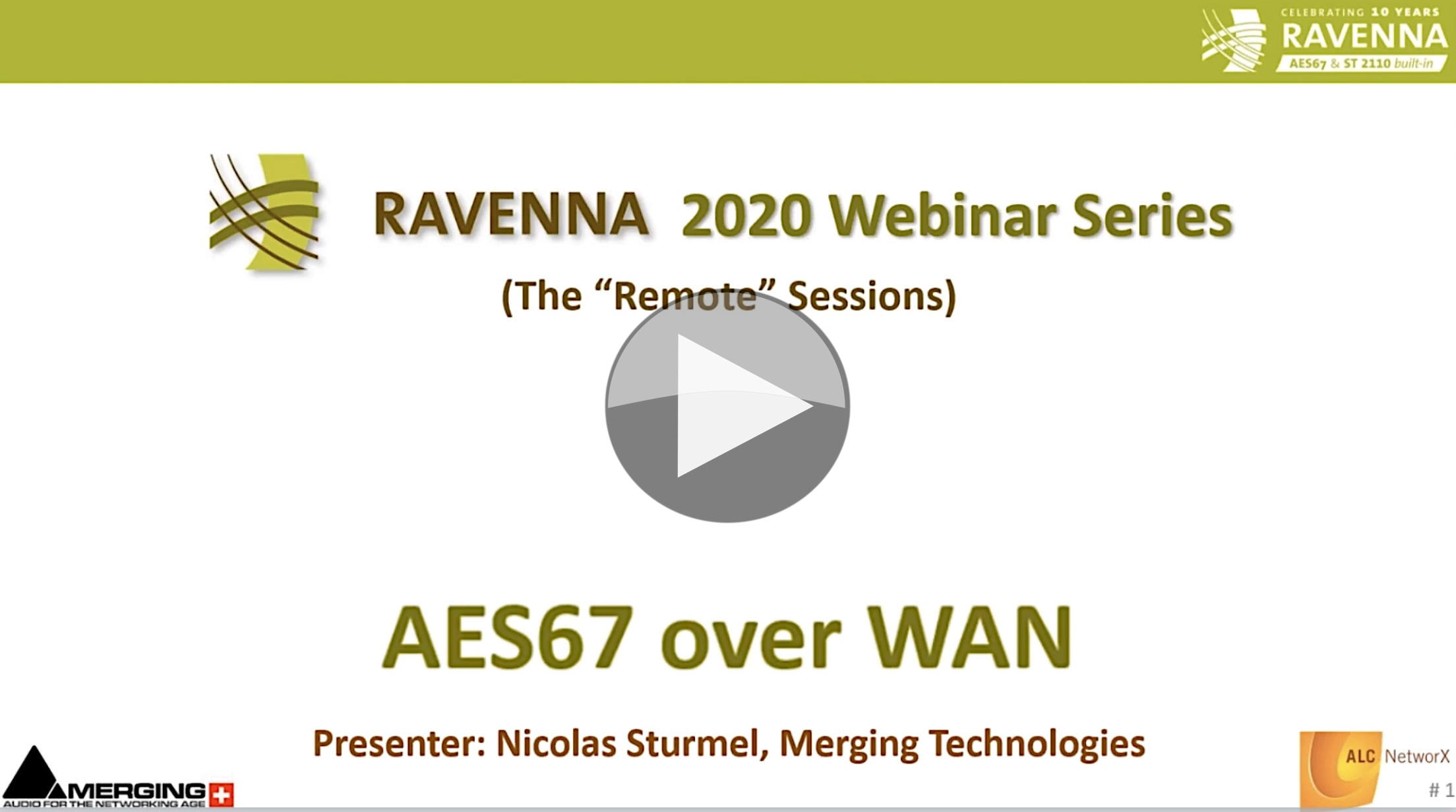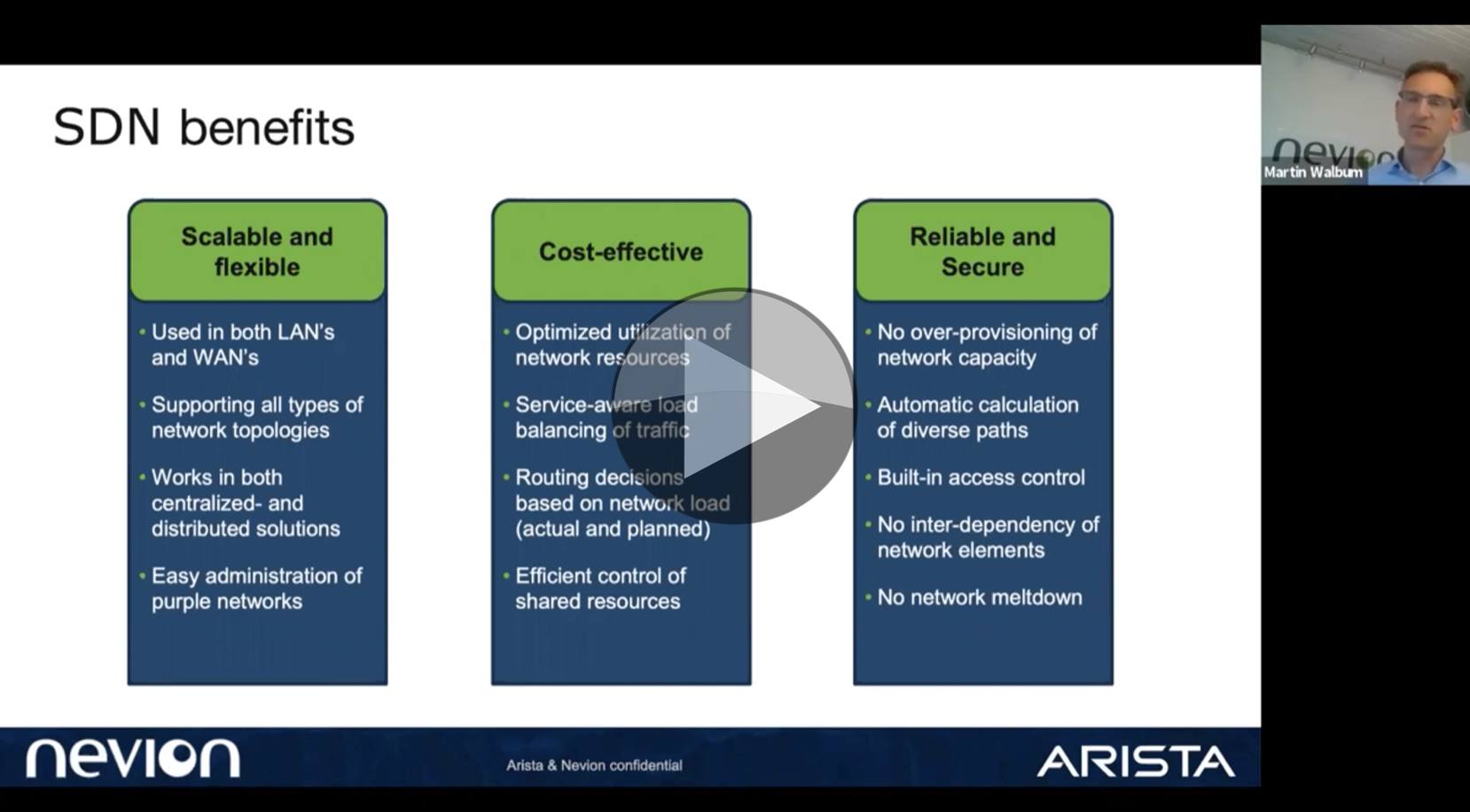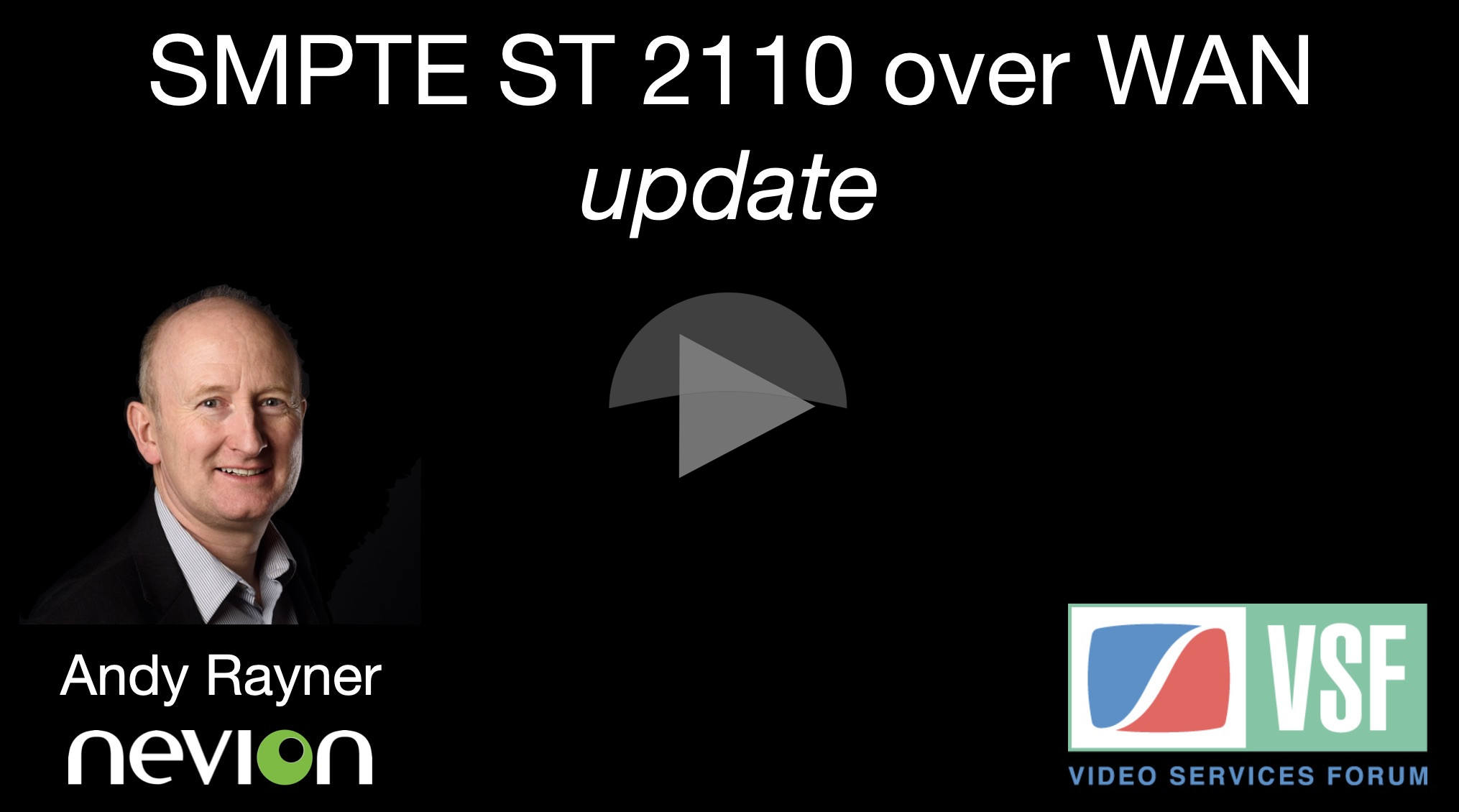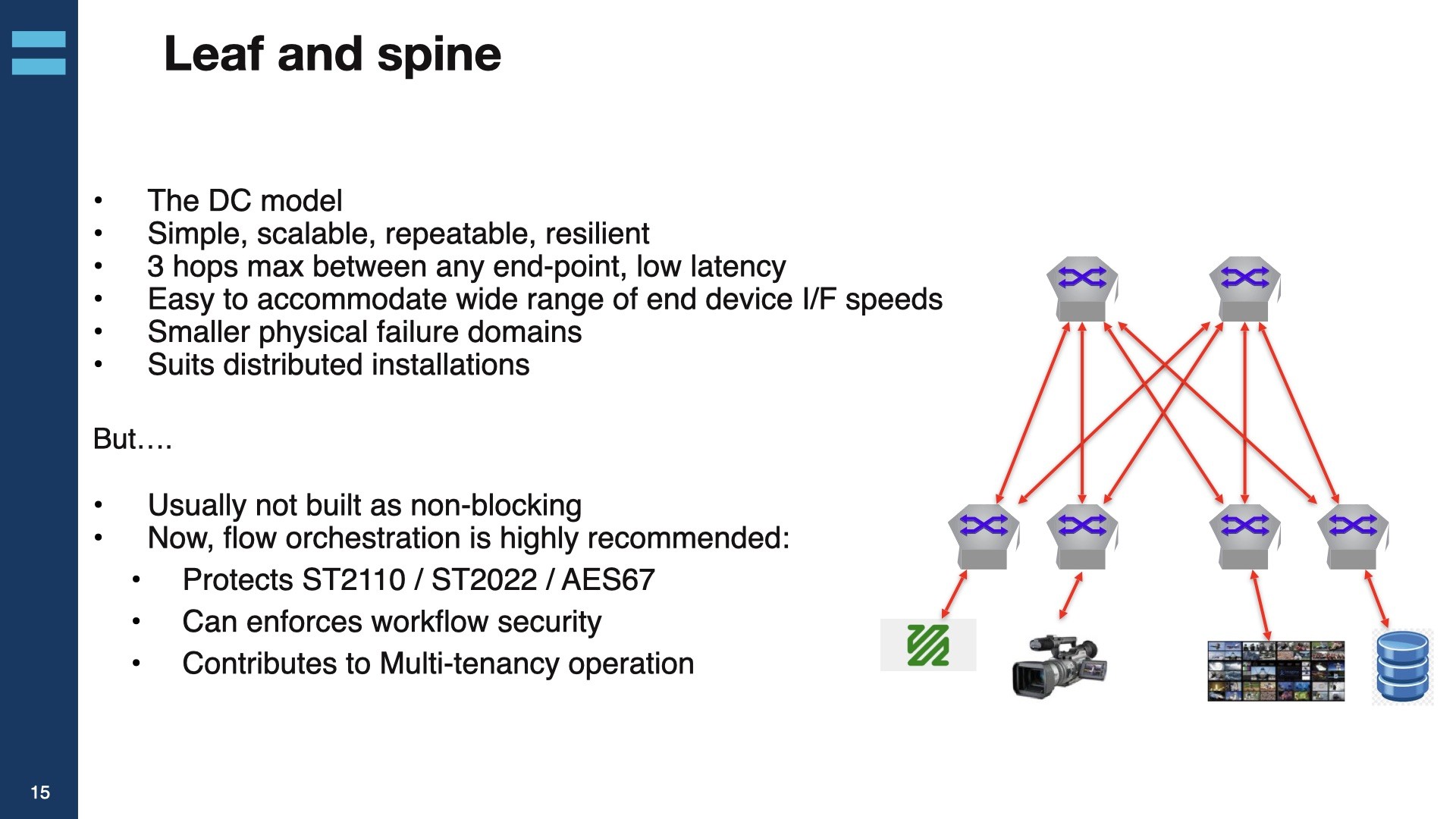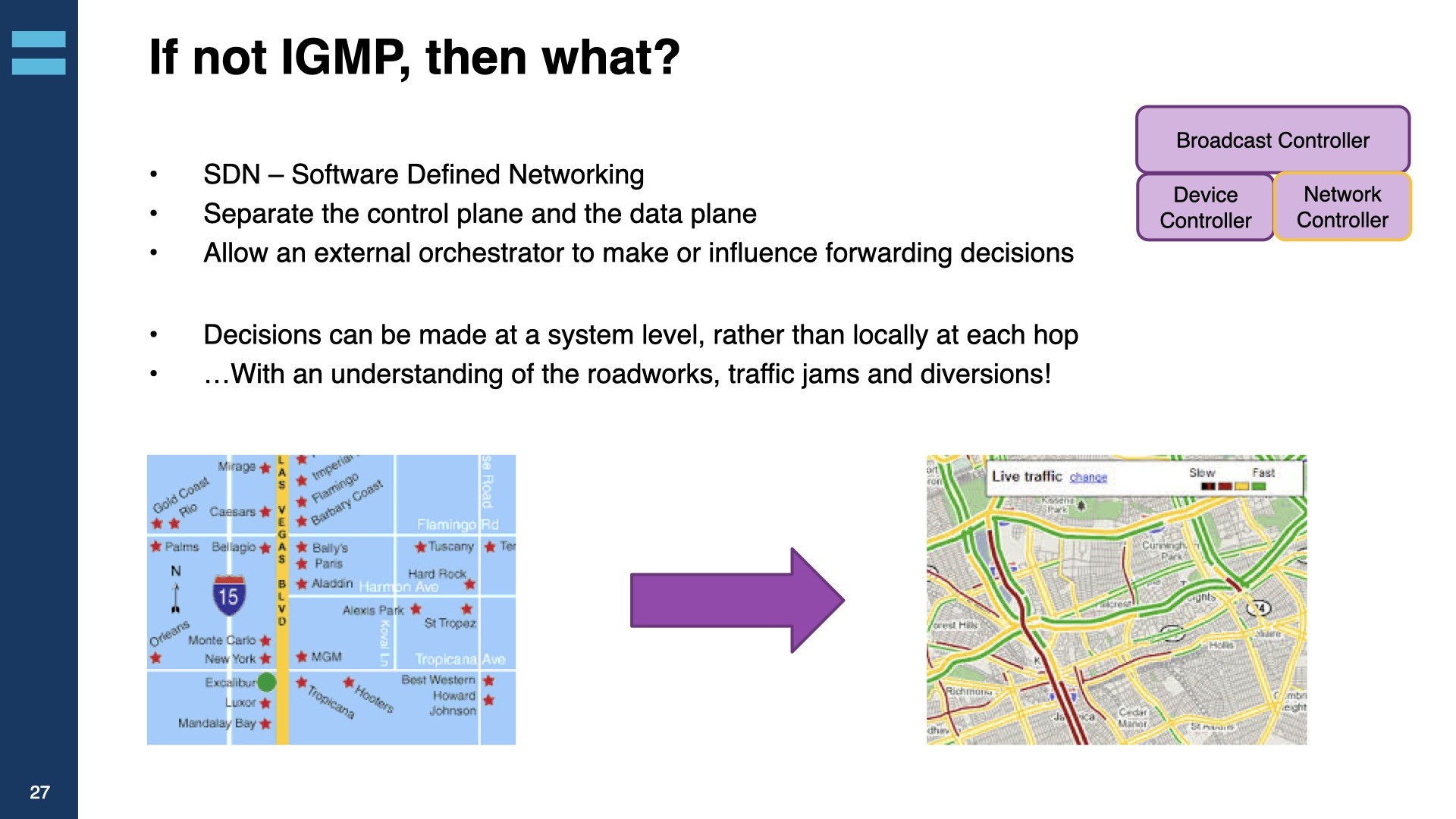Deeply embedded in the audio industry and adopted into SMPTE ST 2110, AES67 workflows surround us. Increasingly our workflows are in multiple locations so moving AES67 on the WAN and the internet is essential. If networks were always perfect, this would be easy but as that’s not the case, this RAVENNA talk examines what the problems are and how to solve them.
Andreas Hildebrand introduces the video with an examination of how the WAN, whether that’s a company’s managed wide area network or the internet at large, is different from a LAN. Typical issues are packet loss, varying latency meaning the packets arrive with jitter, lack of PTP and multicast. With this in mind, Nicolas Sturmel from Merging Technologies takes the reins to examine the solutions.
Nicolas explains the typically EBU Tech 3326 (also known as ACIP) is used for WAN contribution which specifies how a sender and receiver communicate and the codecs to be used. Although PCM is available, many codecs such as AptX are also prescribed for use. Nicolas says that ACIP is great for most applications but if you need low-latency, precise timing and PCM-quality staying AES67 may be the best policy, even over the WAN.
Having identified your AES6-over-WAN workflow, the question is how to pull it off. Nicolas looks at three methods, one is FEC whereby you are constantly sending redundant data. FEC can send up to around 25% extra data so that if any is lost, the extra information sent can be leveraged to determine the lost values and reconstruct the stream. This is can work well but requires sending this extra data constantly therefore putting up your bandwidth. It can also only deal with certain losses requiring them to be of a short duration.
Instead of FEC, you can use RIST, SRT or a similar re-transmission technology. These will actively recover any lost packets and have the benefit that you only transmit more data when you have lost data. Lastly, he mentions SMPTE ST 2022-7 which uses two paths of identical data to cover losses in any one of them. Although this is 100% extra data, the benefit is that it can deal with any type of loss including a complete path failure which neither of the others can do. It is, however possible to combine FEC or RIST with a 2022-7 workflow so you can have two levels of protection.
Timing over the WAN is not ideal as PTP loses accuracy over long-latency links and it assumes symmetry. On the internet, it’s possible to get links where the latency is longer in one direction than the other. An easy, though potentially costly, workaround for distributing PTP over the WAN is to use GPS, GLONASS or similar to synchronise grandmaster clocks at each location.
Watch now!
Speakers
 |
Nicolas Sturmel Product Manager & Senior Technologist Merging Technologies |
 |
Andreas Hildebrand RAVENNA Evangelist, ALCNetworx |

